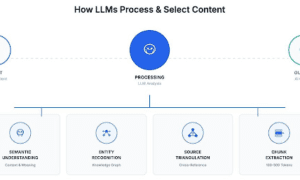Diversity, equity, and inclusion (DEI) initiatives are a top priority for many organizations. And for good reason: Research shows that companies with more diverse leadership perform better financially than those without. However, implementing a DEI strategy has its challenges. One of the most common obstacles is resistance from managers and employees.
Ask for Feedback
Even the best-intentioned managers can have unconscious biases that inhibit diversity and inclusion. They may unwittingly discriminate during the hiring process or while making a decision. Managers can avoid these issues by practicing inclusive decision-making for diversity and inclusion hiring. For example, adding a woman and someone of another gender, a person older or younger than a team member to the discussion, can add different perspectives and improve outcomes. Removing gendered language and jargon from job descriptions is critical during the hiring process, which might make potential candidates feel excluded. Training for managers can help them understand the importance of awareness and avoiding these issues. When discussing the importance of a diverse workplace, it’s also vital to encourage managers to share constructive feedback with their teams. It can help to combat apathy, fragility, and defensiveness. It can also mitigate issues like microaggressions and tokenism, which are forms of harmful discrimination based on age, race, sexual orientation, or cultural background.
Educate Yourself
Managers need to know that unconscious biases can lead to discriminatory hiring practices. These biases can take many forms, including racism, sexism, ageism, and more. These biases can be caused by several things, including upbringing, education, culture, and even the language we use. While these biases are a common problem, they can be overcome with training and awareness. Managers can also learn to recognize microaggressions and how they impact people. In addition, they can learn to avoid “tokenism,” where a person from a marginalized group is hired or promoted to appear diverse. Tokenism can be very harmful to those who are seen as tokenized and does not promote a sense of inclusion. Being transparent about your company’s diversity goals and values is essential. It can be done in job postings by linking to employee resource groups, a code of conduct, and reasonable accommodations policies. You can also host events to help recruit a diverse pool of candidates.
Engage in Dialogue
Open dialogue is critical to a successful diversity and inclusion (DEI) strategy. Allowing employees to discuss their biases and experiences can lead to a more inclusive workplace. These conversations can occur in group meetings, training sessions, or one-on-one. The goal is to help employees understand how their behavior impacts others and the organization. It can include addressing specific behaviors like microaggressions, which are subtle and sometimes unintentional derogatory comments that target people from marginalized groups. Similarly, discussing more general issues like tokenism and hiring or promoting a person from a minority group to make the company appear more diverse can also be a big part of getting your team on board with an inclusive culture. These conversations can also cover things like the ability to accommodate cultural and religious holidays, flexible work hours for new parents, and other crucial personal life factors. It will allow you to set up more accommodating policies and encourage your workforce to be more inclusive.
Communicate Your Goals
When addressing resistance to diversity and inclusion in hiring, one of the most important things you can do is communicate your goals and policies. It can help employees better understand the value of your company’s commitment to diversity. Ensure your employees know you are committed to hiring diverse candidates and use your recruiting methods to reach various candidates. Be aware that unconscious bias can even affect your recruitment tactics, so try new recruiting methods — like using different job boards or asking employees for referrals from their networks. Resistance to diversity and inclusion often comes from the belief that it will be difficult or inconvenient for employees to accommodate. It can be overcome by fostering a culture that values flexible scheduling, working-from-home options, and ensuring your employees know your accommodations. Also, be sure to emphasize that your organization is against discrimination, racism, gender bias, and inequality in the workplace.



































